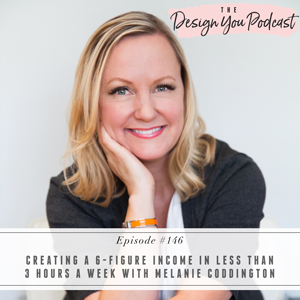
We have great expectations for this year, and many of us are focusing on growing our businesses. But did you know it was possible to work less and still grow your business to generate a six-figure income? This week’s guest is here to show you what’s possible for you this year, and how you can create a six-figure business in just three hours a week!
Melanie Coddington is an Interior Designer and Founder of Coddington Design. After years of running a seven-figure design business, she became enamored with the cannabis industry and set up Sungrown Studio, a completely virtual interior design studio for cannabis dispensaries. She joins me today to discuss the shifts she made in her mindset and business and how they enabled her to earn more and work less!
Tune in this week as we discuss the importance of experimenting and being willing to fail in your business, and the key to working effectively with your team. Melanie tells us how she took a step back from the day-to-day operations to generate multiple revenue streams, and how to set up your business to run effectively without you on the forefront. Get ready to be inspired to change your business, work less, and create a business you love in 2021!
If you want help creating a business with thriving revenue streams so that you can design the life you really want this year, now is your chance! We’re going to be opening the doors to the Design You Coaching Program really soon, get on our waitlist now!





